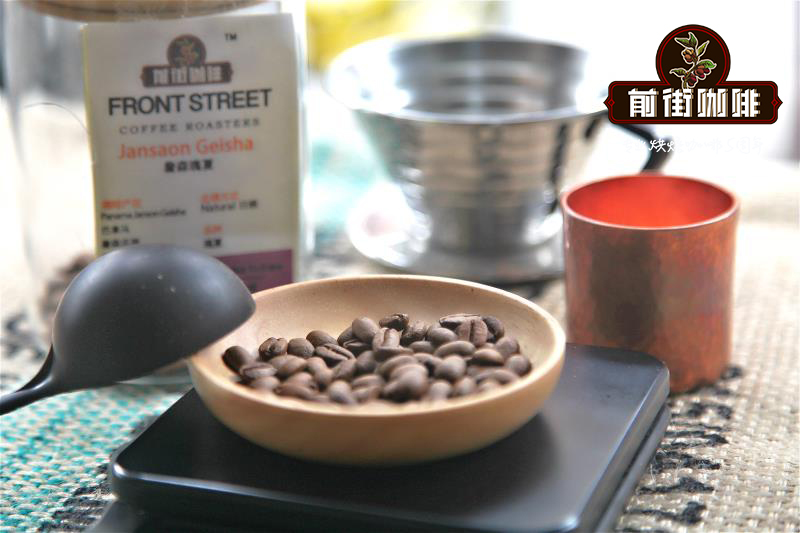Changes in coffee roasting: what are the chemical changes in the roasting process of coffee beans

Professional coffee knowledge exchange more coffee bean information please follow the coffee workshop (Wechat official account cafe_style)
Do you know what happens when roasting coffee beans? What are the chemical changes that transform raw coffee beans into coffee ripe beans with charming flavor and rich aroma?
Major chemical reactions
Heating coffee beans triggers hundreds of different chemical reactions. Baking degrades some compounds, changes others, and produces new ones.
You may have heard someone say that when an organic substance is heated above its decomposition temperature, it produces volatile compounds and leaves solid residues containing large amounts of carbonization or coke. During coffee roasting, we avoid overheating coffee beans to cause carbonization, but they do undergo chemical changes associated with pyrolysis, including caramelization and the production of volatile compounds.
Here are the main chemical changes that come with baking:
Maynard reaction
This reaction occurs at about 150 ℃, when the coffee beans are still absorbing heat and continue to release heat during the baking process. Calories lead to reactions between carbohydrates and amino acids in beans, leading to changes in color, taste and nutrients.
The color change is mainly due to the production of melanin, which not only turns the coffee beans brown, but also affects the taste and mellow thickness of the coffee.
Any small change in the temperature and time of Maynard's reaction at this stage may have a great impact on the final flavor.
Coffee that takes a longer time in the Maynard reaction increases its viscosity, while a shorter Maynard reaction produces more sweetness and acidity, because if Maynard takes too long, the acid and the acid that converts to sweetness will be destroyed.
When the bean baker experimented with baking techniques, it also included changing the length and intensity of Maynard's reaction and recording how these changes would affect the final flavor.
Degradation reaction
This procedure depends on the Mena reaction, in which amino acids react with carbonyl groups to produce compounds such as aldehydes and ketones. The baker does not need to know exactly what these compounds are. it is important to recognize that this reaction is indispensable for compounds that produce aromas and flavors.
Caramelization of carbohydrates
When heated to about 170 ℃, the heat breaks down large amounts of complex carbohydrates into smaller sugar molecules that can be dissolved in water, indicating an increase in the sweetness of the final coffee. This reaction continues until the end of the baking process, and it also contributes to the sweet aromas of coffee, such as caramel and almonds.
Important Notice :
前街咖啡 FrontStreet Coffee has moved to new addredd:
FrontStreet Coffee Address: 315,Donghua East Road,GuangZhou
Tel:020 38364473
- Prev

What happens during coffee roasting? coffee bean roasting temperature and time coffee roasting taste
Professional coffee knowledge exchange more coffee bean information please follow the coffee workshop (Wechat official account cafe_style) roasting coffee converts the chemical and physical properties of raw coffee beans into roasted coffee products. The roasting process causes raw beans to expand and change their color, taste, smell and density, resulting in the special flavor of coffee. Unbaked coffee beans and roasted coffee beans contain
- Next

Changes in the roasting process of coffee beans changes occurred before and after roasting
Professional coffee knowledge exchange more coffee bean information Please pay attention to the volatile and non-volatile compounds in the coffee workshop (Wechat official account cafe_style) you may have heard that volatile and non-volatile compounds are produced during roasting. Generally speaking, volatile compounds are aroma, and non-volatile compounds are flavors. But what kind of substances are these? Volatile compounds
Related
- Beginners will see the "Coffee pull flower" guide!
- What is the difference between ice blog purified milk and ordinary milk coffee?
- Why is the Philippines the largest producer of crops in Liberia?
- For coffee extraction, should the fine powder be retained?
- How does extracted espresso fill pressed powder? How much strength does it take to press the powder?
- How to make jasmine cold extract coffee? Is the jasmine + latte good?
- Will this little toy really make the coffee taste better? How does Lily Drip affect coffee extraction?
- Will the action of slapping the filter cup also affect coffee extraction?
- What's the difference between powder-to-water ratio and powder-to-liquid ratio?
- What is the Ethiopian local species? What does it have to do with Heirloom native species?

